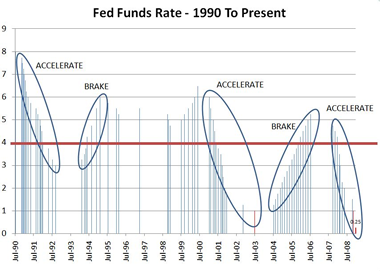SEARCH BLOG: MICROSOFT
This looks long, but you can get through it quickly....
Recently, we installed Microsoft's Office 2007 suite for our small business. After working with it for awhile, I have to say that I highly recommend it as an upgrade to Office 2003. It takes a little while to get used to the new "ribbon" interface, but it is much better organized than the older version.
Microsoft spent a lot of time and effort to gather information about how their customers actually use the Office software and incorporated that knowledge into a superior interface.
That said, let's look at the 1% issue. Here is an example of how they managed to cause a problem while improving their product... and then ignored the problem.
_________________
Communication to Microsoft:
CONTACT INFORMATION
First Name: Bruce
Last Name: Hall
---
CUSTOMER PROVIDED SYSTEM PROPERTIES
O/S: XP Professional
Br: Explorer 7
Country/Region: United States
---
PRODUCT
Outlook Express 6
---
SYSTEM PROPERTIES
Ref URL: http://support.microsoft.com/contactussupport/?ws=support
O/S: windows nt 5.1
O/S Lang: en-US
Br: mozilla/5.0 (windows; u; windows nt 5.1; en-us; rv:1.8.0.9) gecko/20061206 firefox/1.5.0.9
Br lang: en-us,en;q=0.5
---
QUESTIONS OR COMMENTS
Message: After installing Office 2007, the spellchecker on Outlook Express 6 would no longer work in English... in fact, the English dictionary is not available. We use both Outlook and Outlook Express 6 to keep business emails strictly separated from personal emails.
I've seen that it is a problem associated with the Office 2007 installation, so will you be providing a patch with the automatic updates and when?
Thanks.
Response from Microsoft:
Hello Bruce,
Thank you for contacting Microsoft Online Customer Service.
I understand from your e-mail that the spell checker in Outlook Express 6 do not work in English after the installation of Office 2007. I realize the importance of the issue and look forward to assist you.
As a Customer Service Representative, I can direct you to your support options which include Self-Help Resources and Assisted Support. You may try to resolve the problem on your own using the no-charge self-help resources listed below. However, if you prefer assistance from a Microsoft Support Professional, please choose the Assisted Support option mentioned below.
Self-Help Resources:
You may search the Product Solution Center or the Knowledge Base of self-help articles to resolve your issue using the following link:
http://www.support.microsoft.com/select/?target=hub[p1]
You may also post your issue in the Microsoft newsgroups. For information on how to use the Microsoft newsgroups, please visit the following link:
http://www.microsoft.com/communities/newsgroups/default.mspx
Assisted Support:
You may work with a Microsoft Support Professional via e-mail, telephone, and for some products, chat to resolve your issue. Depending on how you obtained your software, there may be fees to use the Assisted Support option. Please visit the following link to contact the Outlook Express 6 Support Team:
http://www.support.microsoft.com/oas/default.aspx?&ln=en-us&gprid=2578&
Please note that if the Microsoft software came from your computer manufacturer, please contact your computer manufacturer directly. Contact information for most major computer manufacturers is available at:
http://www.support.microsoft.com/default.aspx?pr=oemphone
Bruce, if you have additional questions, please write back to us.
Thank you for using Microsoft Products and Services.
My reply to Microsoft's response:
Thanks for your reply.
I was amused, but not necessarily surprised by the response which, in essence was: here are some self-help links where you can get third-party answers.
The problem was identified on the Microsoft site: http://support.microsoft.com/kb/932974/en-us?spid=2578
The various third-party suggestions included downloading questionable third-party software to altering the registry.
Let’s put this in perspective. Suppose you had a car and took it to the manufacturer's authorized dealer to have the engine replaced (Office 2007). When you drove it home, you discovered that your heater no longer worked, so you called the dealer about it. The dealer then says you can:
1. Check your operators manual for troubleshooting
2. Check online help from customer groups
3. Reinstall part of the old engine that contains a hose necessary for your heater to operate
4. Take your car to the local independent garage to see if they have a fix
I suppose you might wonder about the dealer and the manufacturer.
So when is Microsoft going to have a patch to download and install?
Thanks.
Bruce Hall
The upshot is simple: you can try to fix it yourself or get a questionable "fix" from unknown sources on the Internet, or you can
pay Microsoft to help fix a problem they created.
So the conclusion here is that Microsoft is trying and can be trying.
ADDENDUM
One of my particularly computer-savvy sons wrote the following:
Good analogy, Microsoft support, or the lack thereof, is classically bad. Sorry to hear about the spell check breaking... I just got my copy of Vista and Office 2007 in the mail yesterday and had a nightmare of a time trying to install it. Apparently you can't upgrade from the beta and it took a few hours of deleting registry keys and hidden files and folders all over the place to fully get rid of the beta install.
Terrible work on their part making an un-installer that doesn't actually remove the program and an installer that can't upgrade from the beta version.
Okay, now I don't feel so bad.























 Click for enlarged view
Click for enlarged view
















